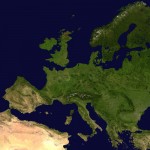 It is a wealthy continent with a rich history and arguably the most liberal political and personal freedoms in the world, yet it is also one whose so-called leaders, following largely in the footsteps of their US master, have a penchant for dictating what is right and wrong to the rest of the world, while striding through it like bygone warlords dispensing punishment and rewards as self-interest dictates albeit now under the guise of a self-proclaimed moral high road. On the horse front, it is also a continent of confronting paradoxes and challenges, something I have become very mindful of, as we try to overcome the vicissitudes of livery accommodation for our horses under your scrutiny and feedback, which can be as challenging as it is helpful. Yet Europe is also an arena in which I find that I am learning important lessons. This time I would like to share some of them with you.
It is a wealthy continent with a rich history and arguably the most liberal political and personal freedoms in the world, yet it is also one whose so-called leaders, following largely in the footsteps of their US master, have a penchant for dictating what is right and wrong to the rest of the world, while striding through it like bygone warlords dispensing punishment and rewards as self-interest dictates albeit now under the guise of a self-proclaimed moral high road. On the horse front, it is also a continent of confronting paradoxes and challenges, something I have become very mindful of, as we try to overcome the vicissitudes of livery accommodation for our horses under your scrutiny and feedback, which can be as challenging as it is helpful. Yet Europe is also an arena in which I find that I am learning important lessons. This time I would like to share some of them with you.
Out of the herd
As I mentioned in my last post, Into the Herd, Pip had gone lame. Over on the other side of the world, Glenn put on his thinking cap and, reviewing his own experience, suggested that the problem could lie in the possibility that “Pip might be suffering from thrush/bugs deep in the central sulcus of the frog – which can make them tender footed, especially on hard ground – but is quite a subtle problem as in general the hoof looks fine, with just a slightly deeper CS [central sulcus] groove”.
Although the right fore hoof, which is where Pip was most tender, did look fine and had the healthiest frog, I decided to go with this suggestion from the other side of the world and started to treat the hoof with NT-Dry (see here for more info) and, lo and behold, Pip started to walk better.
Leave it to the witch doctor
By that stage, however, I had decided to play it safe and bring in a vet, as one does when one believes that one requires expert advice and assistance. Although Vicki and I felt that the problem was in the hoof and were convinced that it was not in the upper leg or body, we could not rule out the pastern or fetlock and this is where we felt a vet could be of some assistance. Perhaps, after more than two and a half years back in a part of the world where people have as much faith (I use the word very advisedly) in modern doctors as their forefathers had in the European equivalent of witch doctors (part of a tradition with which I became familiar during my formative years in Africa), I was beginning to succumb to the same influence.
Beguiled I must have been, for she was young, blonde, attractive, intelligent and authoritative. It sounds like a sorry excuse but it is the only one I can come up with. But why do I refer to it as an excuse? Simply because I found myself accepting and doing things the mere thought of which I would not normally entertain. It started with the examination of Pip’s foot. That examination commenced with a lameness test, which entailed that I was to take a lame horse in pain and force it to trot on a hard surface after bending its hoof up against its lower leg for a short period of time. Then I was asked to trot Pip in a circle on a surface which was so uneven that I would not even have contemplated doing so if she was sound. Oh, and while we were at it, could I please trot her several times on the same circle with first only the hoof anaesthetised and then both the hoof and the lower leg to the fetlock. All of this was done in the name of diagnosis and by the end of it the vet had not even inspected the hoof.
Accepting responsibility
The vet left and I suddenly realised what I had done to Pip. Not only had I forced her to trot in pain, worse I had also insisted on trotting her under local anaesthetic. While I can fully comprehend the need to track down the problem, I cannot understand why there is a need to trot a lame horse in pain for so long when a few steps are really all that is required to establish that there is pain and where the source is likely to be located. Without a close inspection of the hoof and advanced technology, such as X-rays and ultrasound, trotting a horse in pain simply remains guesswork and only really causes the horse to suffer more than it already is. I knew that Pip was going to be very sore when the anaesthetic wore off and I suspected that it would get worse over the next few days. And I was absolutely livid with myself for abdicating my responsibility to my horse simply because a vet insisted that I do so.
Unfortunately, I was right on both accounts. Pip was in far worse pain than she had been before the vet arrived and the condition of the foot deteriorated over the next few days. Fortunately, that vet had left me with several sachets of “bute”, an anti-inflammatory and moderate painkiller which is banned in the Netherlands but is fortunately available in Belgium, where our horses are currently in livery. This helped to some extent, although Pip was not keen on the taste and it required some lateral thinking to get the stuff into her. Now it was time to live up to my responsibility towards her.
Not in the hoof?
Although the vet was convinced that the problem was not in the hoof, I still had my doubts. For a start, there were a few soft spots and small black stains on the sole and a number of tiny holes had begun to show up in them. The hoof had also begun to smell. Equally convincing was the treatment that I had started before the vet came. It had seemed to help. Accordingly, I decided to operate on the assumption that we might be dealing with an abscess and Vicki and I began to bathe Pip’s hoof in warm soda water twice a day, one of us popping over the border in the morning and the other in the evening. In addition, I decided to remove Pip from the herd and she is now in a separate enclosure and next door to the other horses with its own large, walk-in walk-out shelter. Taking her out of the herd has enabled her to relax and to start coping with a situation which had really cast a blanket of gloom around her.
This time we also brought in a professional barefoot trimmer to inspect the hoof and advise us. He cut away most of the black and soft spots, while opening up the tiny holes to check underneath. All he found was healthy sole. To play it safe I also arranged with the vet to come back and take x-rays. Much to my astonishment, I actually had to insist on having the hoof x-rayed as well. If nothing else, we have ruled out bone problems. At the age of sixteen, Pip has the clean joints of a four-year-old. This time the vet left us with about ten sachets of “bute” and I wryly reflected that we were likely to receive a pretty hefty bill for two lengthy visits, one of which required the presence of a second vet to take care of the radiology, and that all that Pip had actually received in the way of medical assistance had been sachets of an anti-inflammatory. This is not to say that I have no respect for conventional medicine. Conventional veterinary medicine has saved the lives of a number of our animals in the past. What I have learned though was a lesson that I had assumed I had already learned before: I am responsible for my horse and no one else.
Pip in boots
Since the vet’s second visit I have been bathing Pip’s hoof in soda every day and she has been making remarkable progress. I trimmed her hooves and this has also seemed to help. There is no sign of any abscess or the likelihood that one will form. Pip is now able to trot, canter and even jump for joy on soft ground. She is walking well on asphalt, although she is still a bit sensitive at the trot. In the past couple of days I have noticed that she has a flap of sole that is beginning to be dislodged as new sole grows underneath. The only drawback we have experienced on the road to convalescence is that we have had to take Anaïs out of the herd and place her with Pip, to prevent the latter from running to and fro. As Pip recovers, the mares are beginning to grow bored and seemed to be keen to rejoin the herd.
It seems to me that Glenn was right. After having lived all of her life on soft ground with metal shoes initially but in recent years none, Pip’s front hooves must have been placed under enormous stress, when she suddenly found herself having to negotiate very hard surfaces. I had assumed that, because she had been barefoot for some time, she would be able to cope. What I had not counted on was that her weak right fore hoof would be more susceptible, a situation compounded by the fact that we have had one of the wettest autumns in recorded memory. The excess water must have softened the hoof and made it more vulnerable to the hard surface, which abraded parts of the sole allowing bacteria in.
At the end of next week we are planning to reintroduce our mares into the herd. This time though I want Pip to be prepared. I have bought her some jogging shoes. No, I kid you not. They are flexible shoes which offer protection without inhibiting the hoof mechanism and they were invented here in Europe, in Norway. Not only are they used for hoof remedial work but they also feature as protective footwear for endurance rides, showjumping and even dressage. And here in the Benelux, where regular visits from the farrier can empty your wallet rather rapidly, such jogging shoes are a far more affordable, not to mention healthier, alternative. My idea is to have Pip wear these jogging shoes on her front feet for part of the day until her hoof grows strong again. Then we shall take them off and see how she fares. You can obtain more information about these jogging shoes here.
Life in livery
Life in livery is a challenge not only for our horses but also for their humans. Since we placed Anaïs in livery here in the Benelux in May 2011, we are now in our third different establishment and each of them has had their challenges. It is a solution that is far from perfect but one which is inevitable to many people for some or other reason. The challenge lies in accepting that, however convenient this may be for the human, it does not excuse the human from their responsibility for their horse. If we accept a horse into our lives, we also need to accept that, with the exception of not being directly responsible for its accommodation and much of its feed, we are responsible for every other aspect of its well-being.
Having said that, I look back on our experience in Australia, where we owned two different horse properties. To be sure, it was great to have our horses with us, to be able to go out and be with them at any time of the day or night. Yet in such a theoretically ideal situation we also had major challenges to contend with. Our life in the subtropics meant high rainfall and rapid-growth subtropical grasses. As a result, we had to find ways to deal with frequent abscesses and the danger of the horses developing “big head” due to calcium deficiency, to name two of the major challenges that we faced at the time. Put another way, having your horses at home with you instead of in livery does not mean that you will not be faced with challenges. At the end of the day, whether your horse is in livery or at home with you, it is like everything else in life: how do you deal with it? With a groan or with a smile?
Humility
Rita’s call to us to accept responsibility for our horses in her comment on my last post has led me to reflect not only on that responsibility but also on our inability to be sensitive towards other people and the different situations within which they find themselves. On our last horse property in Australia we ultimately managed to set up an infrastructure and create conditions which allowed our horses to live in a herd and to do so happily and safely. Our fencing consisted of polymer coated high tensile steel cables with a breaking strength of 600 kg secured to recycled plastic posts which were flexible to about 30°. We had three large fields covering several acres, each with their own large walk-in walk-out shelter with their entrances facing away from the direction of the bad weather. To counter the mud we laid gravel in all of the high-traffic areas, which also had the effect of strengthening our horses’ hooves. It took us ages to achieve this and we learnt a lot in the process.
Coming to the Netherlands has challenged many of the basic assumptions that I had developed in the process. Here we have more than sixteen million people and half a million horses living on the equivalent of two of Australia’s largest sheep stations. Space is at a premium and the rain has nowhere to drain off to on the flat land. Horses are kept very differently as a result. During the summer they go out in the field during the day and are stabled at night. In most cases they are confined to their stables or sand paddocks during the day in the winter, because the fields are too wet, frozen or snowbound. And if they are turned out, the fields are soon churned up into mud, which is why many horses are not turned out when it rains. It is all very well to come in from Australia and proclaim that horses should be kept the way we were used to keeping them. In most cases it is not an option here in the Netherlands or Flanders and certainly not in a livery yard. Perhaps some humility is required to resist the urge to barge in hurling condemnations with self-righteous zeal.
We have constantly sought to ensure the best available facilities for our horses and, given the extraordinary circumstances in which we started out in our new livery yard, we are not yet prepared to condemn it simply on the basis of an unfortunate start. Sure, 18 horses (two have since left) on one and a half acres in the winter is really pushing it but viewed within the Dutch and Flemish context our livery yard does not represent such a silly compromise. Instead of being confined to stables or a small sand paddock (often an outdoor arena or smaller), every horse has the option of utilising all of the space available and, because they are kept in a herd, their constant interaction with each other means that they move much more than they would in a stable or paddock. In addition, the horses do not depend on this space for their feed for the simple reason that grazing outdoors would not yield sufficient nutritional value in the colder months, even if they had access to fields. Instead they have constant access to quality straw and are fed hay at regular intervals throughout the day.
The next big step is small
For some time now Vicki and I have been discussing the need to reinvent ourselves. We feel that we have closed a chapter and are now ready for the next big step. For many weeks now we have thrown ideas around and have tried to understand the direction in which our life has been moving. We have now started to take the next big step and it is a small one. For the time being we will be staying where we are and will start doing the things that we feel are important. How that pans out will probably lead us to the next small part of our next big step.
Amongst other things, we have resurrected our Equine Touch studies, which have lain dormant for a while. This afternoon I hope to complete my last case study for Level 3. Then there is a fair amount of theory to study and a couple of related assignments to complete. If all goes well, we hope to do our Level 3 exam at the beginning of February. This will leave us with just sixty case studies to do with twenty different horses before we qualify as practitioners, hopefully by June.
Calling Europe
Vicki and I have also been toying around with the idea of a European version of Corroboree Equus (see here for more information about the Australian Corroboree Equus held in September this year). It is an idea which appeals to be but one which I feel should not be confined to horse-human interaction. I would like to see a more holistic approach, which involves horse people from around Europe coming together with or without their horses to share ideas and skills covering interaction, training, general horse management, health and hoof care, well-being, body and spiritual awareness, and anything else that people are interested in which is related to horses and how we humans share resources, space and time with them.
I am not too sure whether this is a realistic idea. Nevertheless, I have decided to put it “out there” to see if there is anyone else who is interested in being involved in organising something like this. Initially, I would envisage a sharing of ideas. Something concrete may or may not emerge from this. If you are interested or anyone else you know is, please contact us using the contact form on the About page.
Be well!
As we head into the festive season, I ask myself what it is that I would really love to wish people. Is it really “Happy Xmas” or “Have a prosperous New Year”? Klaus Ferdinand Hempfling has recently published a video on YouTube which, taken at face value, captures the essence of what I feel life should be about and how that can be reflected in our relations with others, in this instance horses, perhaps in your life as well, although it could be humans and/or other creatures.
Towards the end of this video Hempfling asks a question which helped launch me on my journey towards myself. And it is this:
When do you want to be happy … if not now?
So as we head into the festive season I would like to extend to you what I believe is the greatest wish I can extend to anyone: Be well!
Now check out our special festive season page here!
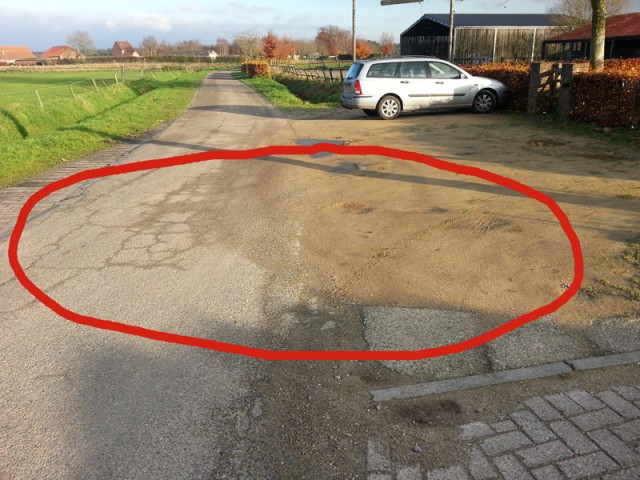
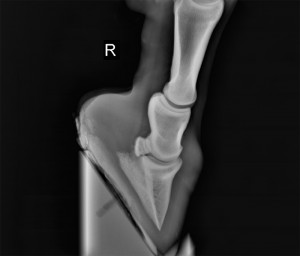
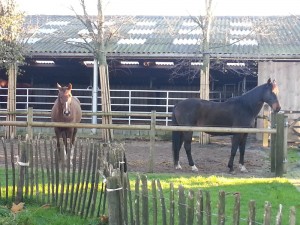
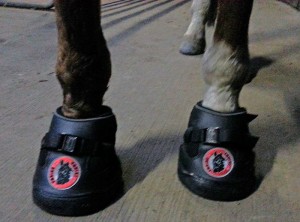





Thank you for the Season’s wishes and the great videos!
Dear Martin
You are welcome.
Be well!
Andrew
Hello Andrew,
Glad Glenn’s suggestions appears to have been of some help to Pip. And great choice of boots for her – I really like that the soles of the joggers are so pliable and mould to both the hoof and the ground shape allowing excellent sole stimulation.
It seems vets (in general) the world over must be of the same mould. We have had some very average (read “narrow minded” or “old school”) experiences with quite a number of them.
A European Corroboree Equus. I LOVE the sound of that – not that I would make it over there. After the initial brainstorming between Glenn, myself and Suzanne got the framework of it sorted out, we literally just “threw it out there as far and wide as we could”, then waited to see what happened……there was always the possibility that it would just be the three of us there, or just an extra one or two….but as you experienced it was so much more. So I whole heartedly encourage you to come up with a plan, set a date, and then “just throw it out there and see what happens” 🙂
Cheers
Kelly
http://www.waterfallcreek.com.au
Dear Kelly
If this was Australia, I might be tempted to adopt the approach that the three of you did when you organised Corroboree Equus.
Being Europe with its myriad of cultures and languages, and its absence of anything resembling Australia’s showground infrastructure – to mention just two major differences – I am reluctant to attempt to replicate Aussie conditions here.
What will happen, will happen if it is meant to. If it is not, it will not.
Be well!
Andrew
Dear Andrew,
For you and Vicky and Anaïs and Pip and for all your blog readers I wish the very best for 2014 and the remainder of 2013 and may the coming period be one of great happiness and lots of love………….
Warmly
Geerteke
Dear Geerteke
Thank you for your good wishes.
Be well!
Andrew
Hello Andrew and Vicki,
Another year is upon us we wish you a very successful 2014 with your endevours, as I was reading your latest information I was thinking to myself what has happened with the study with the Equine Touch Therapy, and as I read the last lot of your blog you answered me… I know how important that type of work is for the animal kingdom, like Bowen and Kinergetics is to us mortals so to the animals need similar treatment.
So good luck with the finishing off of your Course and Happy healing of horses for the coming years.
Dear Laraine
Good to hear from you again and thank you for your good wishes.
Yes, it is great to be doing Equine Touch again and the horses we are privileged to lay our hands on seem to feel that we are helping them judging by the incredible responses we are seeing.
Best wishes to you and yours for a great 2014 in all respects.
Be well!
Andrew